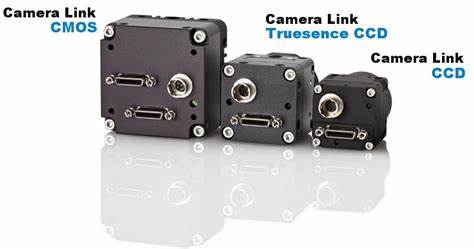Common standards for industrial camera cables include Camera Link, Gige Ethernet interface, USB 2.0 and USB 3.0 interfaces, 1394-A and 1394-B interfaces, and CoaXPress.

The Camera Link specification was introduced in the late 1990s, which defines a 26-pin MDR connector as a standard connector. The basic technology is low voltage differential signaling technology LVDS. LVDS transmits two different voltages and compares them at the receiving end. The voltage difference values on the two lines correspond to different information codes. Therefore, one signal requires two cables. The biggest advantage of LVDS is that the transmission speed is very high.
LVDS, Low-Voltage Differential Signaling, low voltage differential signaling, also known as RS-644 bus interface. A signal transmission mode proposed by USA National Semiconductor in the 1990s is a level standard widely used in LCD interfaces. It offers low power consumption while providing high data transfer rate, and it has many other advantages:
1、Low voltage power supply compatibility
2、Low noise
3、High noise suppression capacity
4、Reliable signal transmission
5、Able to be integrated into system level ICs
LVDS, namely the low-voltage differential signaling, is a new technology for today’s high-performance data transmission applications. It also meets the needs of future applications because it allows the system to supply voltages as low as 2V. The current popular LVDS specification has two standards, one is the ANSI/TIA/EIA-644 LVDS interface standard, and the other is the IEEE 1596.3 standard. The LVDS interface is a common interface standard for LCD Panels. Generally, 14PIN, 20PIN, and 30PIN are LVDS interfaces.
Camera Link is based on Channel Link. Channel Link was originally a solution for transmitting video signals to flat panel displays, which was later used for general purpose data transmission.
Earlier versions of the Camera Link interface, as shown on the left picture, use a 26-pin miniature Delta Ribbon connector (MDR-26) with pins that are easily supported by the intermediate plate. Starting from the standard version 1.2, the shrinkage variant SDR-26 is allowed. As shown in the figure on the right, the pins are tightly wrapped around the connector, which is not easy to loosen and has a higher reliability.
The Mini SDR (‘Shrunk D Ribbon’) connector (SDR-26) and camera link power (PoCL) were introduced for the first time in the upgraded 1.2 standard version of 2007. The Mini Camera Link interface and Power on Camera Link were born as well as (PoCL for short) function.
Camera Link industrial camera cable interface has three configurations Base, Medium, Full, mainly to solve the problem of data transmission, which provides suitable configuration and connection method for cameras of different speeds.
Base maximum transmission speed:2.04Gbit/s (255MB/s)
Medium maximum transmission speed:4.08Gbit/s (510MB/s)
Full maximum transmission speed:5.44Gbit/s (680MB/s)
The pursuit of higher transmission rates in industrial applications is eternal, and how to reduce the cost while increasing data bandwidth, improving transmission reliability, and increasing transmission distance. The new generation interface standard Camera Link HS (CLHS for short) was born.
In the Camera Link HS standard, the cable can be directly connected to the FPGA, eliminating the need for additional components or equipment and therefore lower cost. At the same time, Camera Link HS can compensate for cable loss with higher voltage and automatic equalization of the receiver, thus achieving signal transmission over long distances.
In theory, a single 15m copper wire can get 2.1Gbit/s, which is three times that of a single copper cable Camera Link Deca! This lower cost interface standard has been applied between major camera manufacturers and can achieve communication distances over 30m!
At present, the largest application of Camera Link HS interface camera is in the field of FPD, and the satisfaction of speed requirements of high-end camera is very representative.
The Camera Link HS interface signal protocol is totally compatible with
Camera Link, but supports higher transmission bandwidth, and the single cable is four times that of the Camera Link interface. The Camera Link HS interface enables fully accurate real-time external triggering, and its cable standard uses a more compact and reliable CX4 standard cable, which has longer life and longer replacement cycles.

